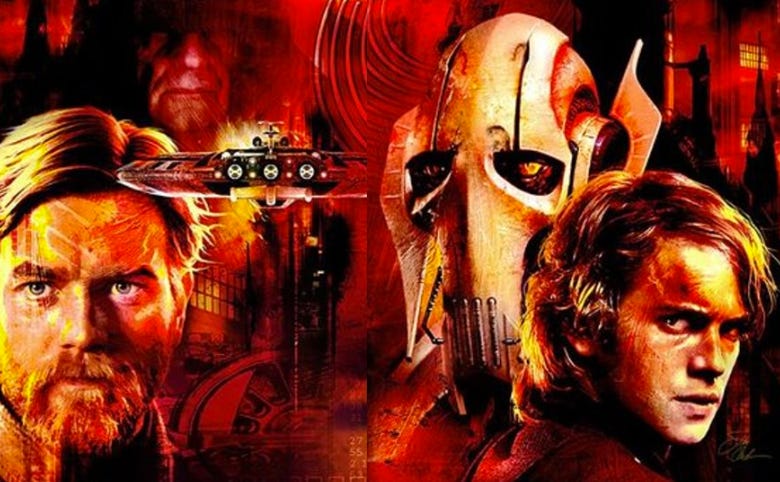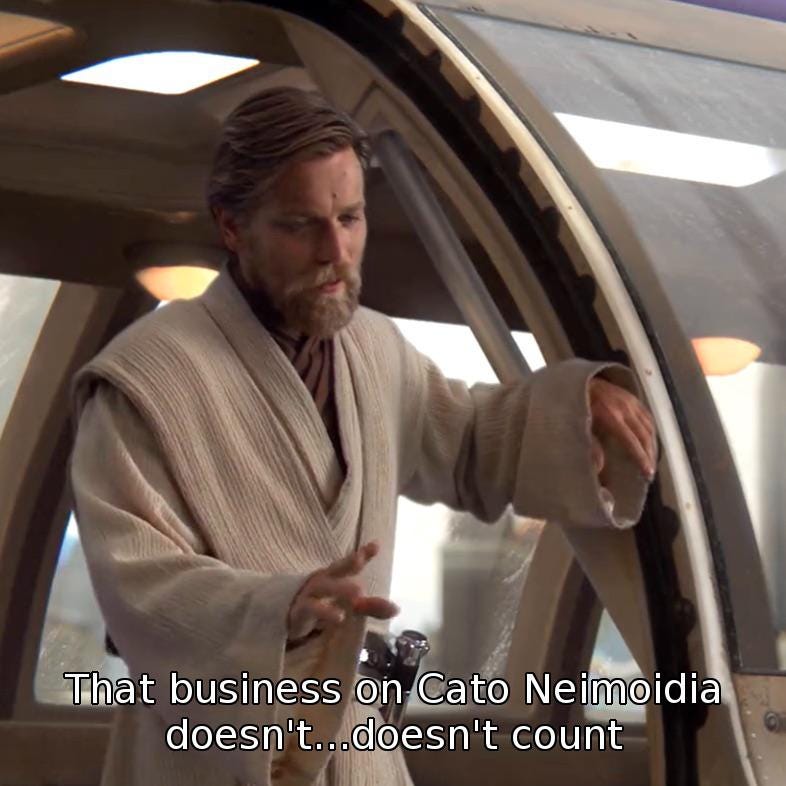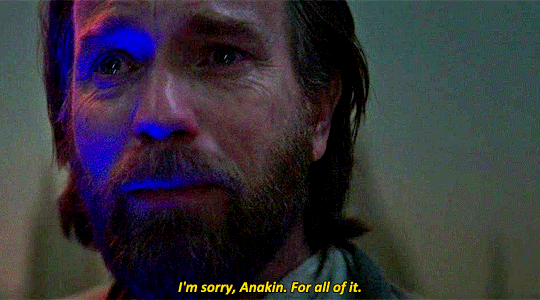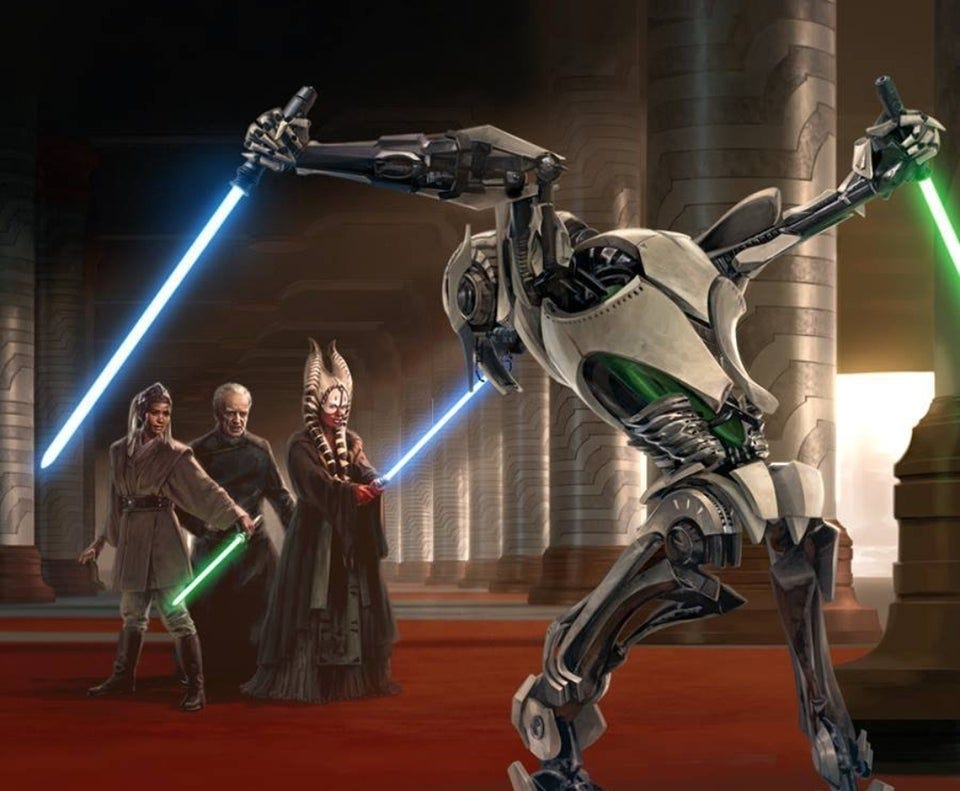Star Wars: Labyrinth of Evil is a great introduction into the larger world of Star Wars stories. Especially for prequel movies and Clone Wars fans. The events of the book lead right up into Revenge of the Sith and fill in a lot of the gaps between then and Attack of the Clones. While the novel is a part of Star Wars Legends and not canon, some details contradict what we’re given in the Clone Wars animated series. None the less, Labyrinth of Evil itches the scratch of anyone who’s a fan of this era.
I was a bit worried at first as the beginning chapters show no subtlety in what we know is to come. Anakin’s emotions are often described very plainly and harshly. Using phrases like “fury clouded his eyes” while at the same time Obi-Wan is “more disappointed than angry”.
However, the book settles into itself very nicely. The plot falls right in line with what we’ve come to know of Clone Wars stories, primarily Obi-Wan and Anakin as they travel the outer rim for anything that may lead to the heads of the Separatists army. We’re an answer to what Obi-Wan is referring to in the below scene from RotS.
Outside of the immediate war action with Obi-Wan and Anakin, the book contains loads of great character development.
Let’s start with General Grievous. We get some much needed background on the cyborg, and it lives up to expectations. Grievous is a former Kaleen warrior. Known for his ruthlessness and ability to lead troops, Count Dooku (we’ll get to him) and Darth Sidious decide he’s perfect to lead their droid army. After a war on his home world, with little left to live for, Grievous finds himself the victim of a shuttle accident that puts his life in danger. One of Sidious’s cronies — San Hill — finds Grievous and bargains that he can save the general’s vital organs in exchange for Grievous’s part in commanding the droid army. Sidious uses this as his opportunity to build Grievous into the war machine he ultimately becomes.
We also get background on how Dooku became a Sith Lord. We’re taken back to when Dooku is still a part of the Jedi Order. He has conflicting feelings on how the Jedi see the dark side of the force. He believes that to have true peace, the Jedi need to understand the dark side, along with the light. Without a full view and understanding of the force, the Jedi are blind. There’s rumblings of a dark presence rising in the galaxy and Dooku considers going to discover this darkness on his own.
Dooku eventually does make his turn. Meeting with Darth Sidious in an old, industrial area of Coruscant called The Works. Here Sidious mentors Dooku on all the ways of the dark side and assuming the title Lord Tyranus. Before formally leaving the Jedi Order, Dooku discovers that Jedi Sifo-Dyas has been working on a Clone Army behind the Order’s back. Dooku murders Sifo-Dyas in an attempt to assume his role in working with the Kaminoans on the clone army and further keep it from the Jedi Order.
Further moving up the chain of those being pulled into the dark side, the attention turns to Anakin. Of course he doesn’t fully turn in the book but we know where he’s headed. In a broad sense, the prophecy of being the chosen one to bring balance to the force begins to be a heavy toll on Anakin. The prophecy not only affects his actions but also those around him. Yoda and Mace Windu make war strategy decisions and sacrifices based on the idea that Anakin is the Chosen One. In the heat of battle Obi-Wan wonders if Anakin can even be killed as the Chosen One. He wonders if it’s the duty of the Jedi to protect Anakin at all costs to fulfill his prophecy. And finally we get Anakin’s own views on the situation. How he feels about his own prophecy and how he feels about the expectations those have place on him. He says, “I never claimed to be the Chosen One. That was Qui-Gon. Even the Council doesn’t believe it anymore so why should I?” His frustration and impatience with the Jedi Council shows.
On several occasions he turns to Palpatine for guidance or advice rather than Obi-Wan or other Jedi Masters. Two specific examples of this stuck out to me. Early on in the book Obi-Wan suggests that Anakin call Palpatine for advice. Because he wasn’t raised in the Jedi Temple, Anakin sees this conversations Palpatine comforting. Palpatine does not speak in terms of the force. He speaks in terms of what they call the “real world” — very plainly.
That scenario ties right into a scene we get between Obi-Wan and Anakin later on in the book. Anakin begs for advice from Obi-Wan as a friend, not his former master. He asks Obi-Wan, “Forget for a moment you’re wearing the robes of a Jedi and tell me what I should do!” Obi-Wan, taken a back by Anakin’s plead only offers up the dull response of, “The Force is our ally, Anakin. When we’re mindful of the Force, our actions are in accord with the will of the Force.” Whatever the hell that means… Needless to say Anakin is not happy with the response and Obi-Wan immediately knows that was he said was unfair, inappropriate. He failed to help out his former Padawan and friend when he needed him most. And I could only think of one thing…
I’ll wrap up this long winded review with a climax that lived up to the billing. The puppet master, Darth Sidious, played everything perfectly to get what he wanted. I’ve always thought it was strange that RotS opens with Palpatine captured from his home right under the Jedi’s noses. The Anakin and Obi-Wan are sent on a wild goose chase in the Outer Rim to ensure that they cannot assist on Coruscant. The information Dooku and Grievous are given to assist with the capture but not give Palpatine’s true self away.
Ultimately, this is an excellent story for any Star Wars fan but especially those with a fascination of the Clone Wars and prequel movies. We even get a a brief mention of our diner cook king Dexter Jettster. Although it’s a little rushed at the beginning and end, the story unfolds real nicely.
Rating:








